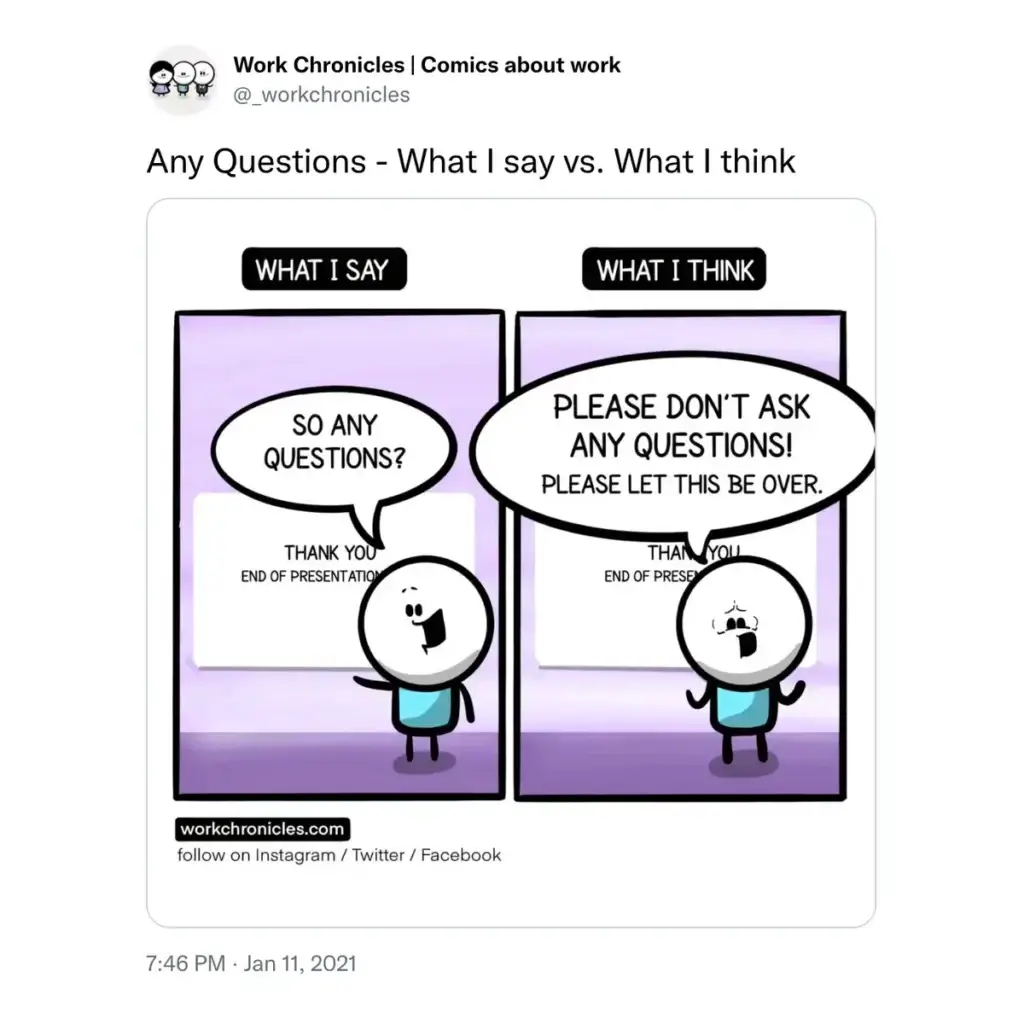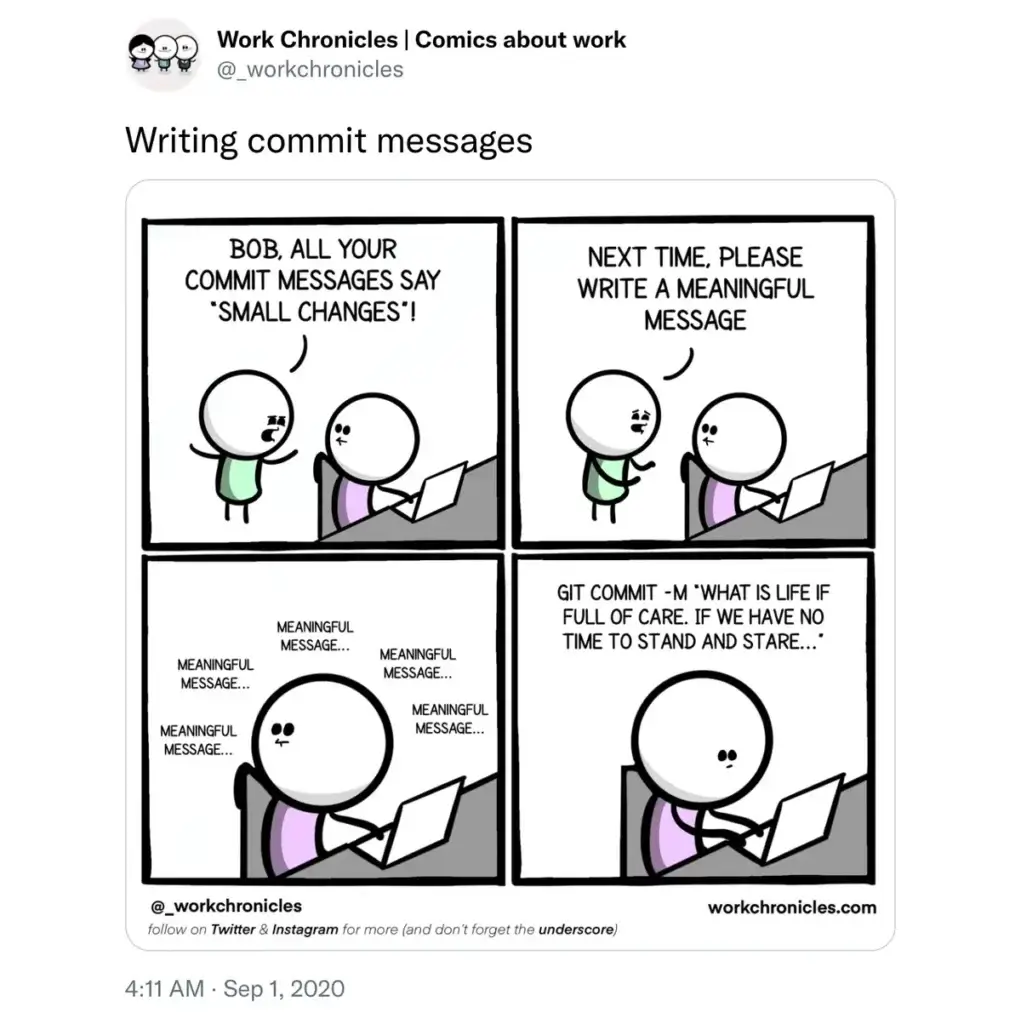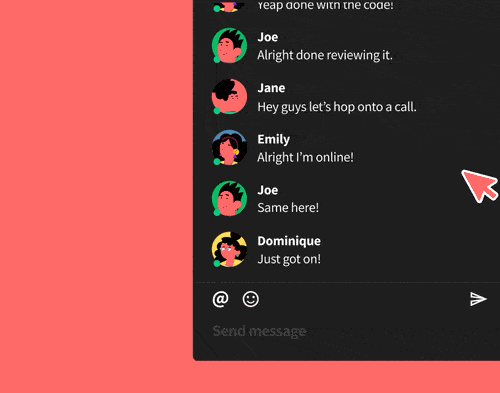How to Ask Better Questions in Asynchronous Remote Team Collaboration
As Socrates (apparently) once said: “The only true wisdom is in knowing that you know nothing.” Figuring out how to ask better questions is a major advantage in...
As Socrates (apparently) once said: “The only true wisdom is in knowing that you know nothing.” Figuring out how to ask better questions is a major advantage in the increasingly remote, asynchronous world. It’s also a tell-tale sign of good remote leaders who see beyond their competencies and aren’t afraid of childlike curiosity.

According to psychologist and the author of Trusting What You’re Told: How Children Learn from Others Paul Harris, children ask an average of 40,000 questions before they turn 5. But as we get older, that innate inquisitiveness slowly dies down.(1)
In today’s article, you’ll learn how to rediscover that questioning aptitude and why curiosity is (still) the best policy. Learning how to ask better questions will help you:
🤝 Improve team collaboration and communication.
🧠 Challenge your knowledge and learn new things with humility.
👁 Encourage a culture of trust, transparency, and curiosity.
💰 Reduce collaboration bottlenecks and avoid costly mistakes.
💬 Fortify emotional intelligence and help your team thrive.
Sounds like fun, right?
🤔 What Makes a ”Good” Question Good?
Paraphrasing the tenets laid down in the (in)famous web guide How To Ask Questions The Smart Way by Eric Raymond and Rick Moen, a good question:
Describes the nature of a problem/inquiry clearly and carefully.
Provides context and all the details that support the answer.
Follows due diligence and independent subject research.
Contributes to and benefits the community, not just the inquirer.
Is grammatically correct and has a standardized format.
Provides feedback once a solution has been reached.(2)
And that’s an excellent start. The problem is many of us don’t think of asking better questions as a particularly important or relevant skill. And we’re not entirely to blame.

In a 2011 paper, a group of researchers discovered that widespread access to information (thanks, Google) has been silently rewiring our brains. The study found we’re getting worse at memorizing information but better at recalling how to find it.
And that’s how the term “Google Effect,” aka digital amnesia, was born.
💬 “[…] when faced with difficult questions, people are primed to think about computers and that when people expect to have future access to information, they have lower rates of recall of the information itself and enhanced recall instead for where to access it.”
—Google Effects on Memory(3)
To make matters worse, we now think of digital devices and algorithm-driven search engines as the single source of truth (SSOT). Heck, getting “some” answers seems to be more important than getting the “right” answers.
We don’t want to sound sentimental, but one implication of this shift is that the know-how of asking better questions is in decline. And it’s time to bring it back.
🌟 Why You Should Learn How to Ask Better Questions
As remote work is gaining momentum, more companies are choosing a remote-first or hybrid approach. That means it’s not unusual for team members to collaborate across several time zones. With a limited time window, your async options boil down to:
📨 Email messages
🐑 Collaboration tools
💬 Instant messaging
🎙 Voice/video messages
The only problem? Remote communication is still a major obstacle, both for seasoned and new remote teams. Buffer’s State of Remote Work 2021 report revealed it’s the second most common struggle, right next to loneliness and inability to unplug.(4)
As a remote leader, you need to learn how to ask better questions not only to alleviate those struggles but also to improve team communication across the board.
But there are other considerations as well.
Improve Team Coordination Across Time-Zones
Communication in globally distributed teams is like speed dating. There’s only a narrow time window to get information in and out before business closes. A poorly formulated question will cost you a full working day of delay and potential collateral.

A study published by the Academy of Management Discoveries (AOM) indicates that successful teams communicate in “bursts.” In other words, team members chat within a designated time window and fly under the radar the rest of the time.(5)
Learning how to ask better questions is an excellent way to make the most of those bursts. That, in turn, will help you and your team improve your communication dynamic, reduce bottlenecks, and cut reply time by a significant margin.
Exercise Humility and Discover How Much You Don’t Know
According to Gary B. Cohen founder of a Minneapolis-based executive coaching business and the author of Just Ask Leadership: Why Great Managers Always Ask the Right Questions, you should approach uncertainty with humility.
💬 “One of the most difficult challenges you have as a leader is to accept that you may not know what is right, or best, for most situations. You’re accustomed to having the right answers, so it’s hard to let go of the answer-providing habit.”(6)
It’s very easy to assume you have all the answers, especially when you’re in a position of authority. Exercising humility will allow you to overcome cognitive bias, identify gaps in your knowledge/reasoning, and increase your learning velocity down the road.
Create a Sustainable Communication Culture
The author of Leading with Questions: How Leaders Find the Right Solutions by Knowing What to Ask Michael J. Marquardt argues there are six cornerstone characteristics of a good “questioning culture” at a company.(7) These include:
Making it ok to say “I don’t know.”
Encouraging curiosity and inquisitiveness.
Constantly improving questioning skills.
Asking team-empowering questions.
Enjoying the investigative process.
Sticking to those rules and seeding them in your team is one of the best ways to create a sustainable communication culture. The overarching goal is to show your team that it’s ok to be inquisitive and challenge the status quo.
Find Out What Other Team Members Are Struggling With
The APA Dictionary of Psychology defines emotional intelligence as: “[…] a type of intelligence that involves the ability to process emotional information and use it in reasoning and other cognitive activities […].” Sounds complicated?(8)
Well, that’s because in the modern world of big data, we value numbers more than human-human interactions. We rely on KPIs and ROI, but rarely stop to ask how people feel. We focus on a drop in productivity but don’t dig deeper to find the cause.
A lack of empathy and emotional intelligence can seriously stifle remote leadership. Taking the extra step and asking a lot of questions will allow you to expose underlying organizational problems and your team members’ personal struggles.
Avoid Making (and Repeating) Costly Mistakes
Albert Einstein famously said: “If I had an hour to solve a problem I’d spend 55 minutes thinking about the problem and five minutes thinking about solutions.” To avoid costly mistakes, you need to get into the habit of questioning before green-lighting decisions.
A 2017 report by Mitel Networks Corporation showed that poor communication costs companies $11,000/employee annually.(9) Miscommunication is also the sole culprit in 56% of failed projects, according to the Project Management Institute (PMI).(10)
Not asking the question “why” something happened—like that data breach that cost your company a lot of money—is begging for it to happen again. Not asking “how” you can prevent it from happening again is setting your remote team up for failure.
👩💻 7 Steps to Ask Better Questions Asynchronously
💬 “There are naïve questions, tedious questions, ill-phrased questions, questions put after inadequate self-criticism. But every question is a cry to understand the world. There is no such thing as a dumb question”.
—Carl Sagan, “The Demon-Haunted World: Science as a Candle in the Dark”
1. Ask Questions You’d Like to Answer
The average office worker gets around 120 emails every single day. Top it off with texts, video conferences, and in-app chats and you know why nobody wants to answer your questions (promptly). The solution? Ask the kind of questions you’d like to get.

good questions
Granted. Asking “beautiful questions” is not always the best policy in a remote setup. But firing half-baked inquiries at your team and rushing the process is bound to end up in a ton of back-and-forths. Here are a few tips that’ll help you polish your queries.
Ask questions you’d genuinely enjoy answering.
Make sure every question you ask has a purpose.
Respect the time and focus of your team members.
Make sure you’re targeting the right audience.
Limit the number of message recipients.
Shorten the distance and use positive language.
Consider the time/effort burden before hitting send.
2. Mix and Match Communication Channels
A 2021 survey by Superhuman found that we’re overwhelmed by clogged inboxes, Slack conversations, and Teams meetings. It turns out 49% of office workers blatantly admit they’d rather clean a bathroom than dig through a 10-day email backlog.(11)
The good news is, there are many ways to communicate in a remote team. And not all of them are as synchronous and real-time as we like to think. In fact, you should focus on asking most questions asynchronously and matching the channel to context.
Email is not a live chat so stop treating it as such.
Reserve video conferencing for “red alert” type of situations.
Unify communication using a collaboration tool/platform.
Cycle between text, email, and chat for most inquiries.
Use team chat when the question can benefit the team.
Use text messages as a last resort outside business hours…
but first set boundaries and establish rules with the team.
3. Format Your Questions for Clarity and Context
According to a survey by Adobe, we spend around 3.1 hours each day checking work email.(12) At the same time, 70% of the U.S. workforce feels communication at their company is broken and fragmented. Isn’t that ironic considering that we live in the “information" age?(13)
Firing a “quick” email question at your team may seem like a good idea. But failing to format your messages for clarity and context will cost the addressee time and focus. After all, they need to decipher your gobbledygook before they can hit reply.
Keep your grammar in check, but don’t obsess about it.
Use simple language and avoid jargon whenever possible.
Apply the Flesch–Kincaid readability test (a score of 60+ is great).
Write subject lines that reflect the content of your messages.
Keep your questions short and to the point (75-100 words).
Present events/steps/problems in chronological order.
Use Rich Tech Format (RTF) to include bullets, colors, and more.
Provide context, including code snippets, links, and screenshots.
4. Share Answers With the Team
💬 “It is good to rub and polish our brain against that of others."
—–Michel Eyquem de Montaigne
A survey of 1,000 professionals by Wakefield Research discovered that 54% of office workers spend more time searching for documents and files than communicating. Finding the right answers in such a chaotic environment is anything but easy.(14)

Whenever you ask your team a question, consider the answers you get in a wider context of combined team knowledge. The goal is to aggregate and repurpose solutions so they can be easily reused when similar problems come up again.
Capture every relevant answer in a team knowledge base/wiki.
Repurpose answers into reusable checklists for solving problems.
Create project-specific, collaborative FAQs.
Avoid DMs for questions that can benefit the entire team.
Ask more open-ended questions for extra feedback/context.
5. Don’t Avoid Tough Questions
A Harris Poll survey for Interact Studio revealed that 69% of managers don’t feel comfortable communicating with employees. Giving direct feedback is also a major obstacle, with 37% of leaders holding back when they expect a negative reaction.(15)
When your team drops the ball, you should investigate what happened without becoming confrontational. The best policy, according to Kim Scott’s Radical Candor: Be a Kick-Ass Boss Without Losing Your Humanity, is to be honest but not offending.(16)
Be receptive to criticism and ask the same of your team.
When you ask for feedback, be prepared for tough answers.
Never sacrifice clarity and accuracy for niceties.
Exercise transparency and honesty in communication.
Ask questions to receive answers, not to be confrontational.
If possible, ask sensitive questions synchronously (video, calls).
6. Mind the (Time-Zone) Gap
There’s no remote collaboration, especially across multiple time zones, without asynchronous communication. The only problem is the time window for asking questions is narrow so you need to get into a habit of thinking across time zones.
You can improve your odds of receiving a prompt reply by learning from the marketing industry. tl;dr Most statistics say the best time to get in touch is 8 am when everybody’s still sipping coffee. The second best time is 1 pm which is a lunch break for most people.
Ask questions first thing in the morning for extra leeway.
Establish a time window for synchronous communication…
1 pm - 3 pm works well for East Coast/West Coast teams.
Schedule your emails to account for different business hours.
Use asynchronous communication for most situations.
Let the recipient know when you don’t need an answer ASAP.
Check your team member's local time before you hit send.
🐑 Pro Tip: Taskade lets you quickly check if your team members are up. Simply hover over your teammates’ profile icons to see their local time. Jump over here to try Taskade for free.

7. Don’t Be Afraid to ask “Stupid” Questions
As a leader, you’re supposed to have all the answers. It doesn’t matter if it’s a technical question, free DIY advice, or explaining the meaning of life. You’re expected to come up with effective and prompt solutions to the most bizarre problems.
But hey, that doesn’t mean you have to act like the Delphic oracle when you’re out of your depth. As a leader, you should still feel comfortable being curious and inquisitive. Yes, even when that means asking a lot of seemingly dumb questions.
Exercise curiosity and encourage it in your team.
Don’t be afraid to ask stupid questions, but…
...always preface them with diligent research.
Scoop what you already know and connect the dots.
Ask open-ended questions to avoid follow-ups.
🐑 Conclusion
Exercising humility and curiosity in team interactions will allow you to build trust, promote transparency, and create a sustainable communication culture. With some practice, it'll also open your team to more coherent and productive discussions.
Here’s a refresher of everything we've learned today. 👇
Ask questions you’d like to answer.
Mix and match communication channels.
Format your questions for clarity and context.
Share answers with the team.
Don’t avoid tough questions.
Mind the (time-zone) gap.
Don’t be afraid to ask “stupid” questions.
And that’s it!
💡 Before you go… The world of collaboration is changing and so are the skills you need to succeed in this new reality. Check these articles next:
⚔️ A Startup Guide to Storytelling: Learn from Text-Based Games!
🧠 Knowledge Sharing 101: How to Build a Smarter Remote Team Today
Sign up and find answers to all your questions with Taskade AI! 🤖
🤖 Custom AI Agents: Deploy custom AI agents to act as your personal research assistants, formulating questions and finding information.
🪄 AI Generator: Describe what you're working on in natural language to generate document outlines and complete project workflows.
✏️ AI Assistant: Use smart writing insights to communicate more effectively, whether you're drafting messages or preparing for meetings.
🗂️ AI Prompt Templates Library: Access a variety of AI prompt templates designed to enhance inquiry and communication.
💬 AI Chat: Interact with Taskade AI for stimulating conversations, information retrieval, or just to bounce ideas off 24/7.
📄 Media Q&A: Implement AI to analyze documents, extract key insights, and provide feedback on what you can improve.
And much more...
